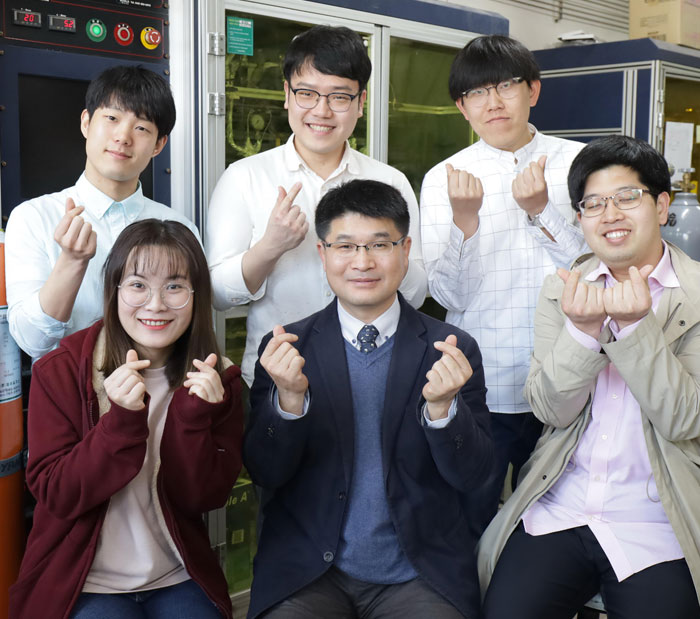Research Stories
Conversion of CO2 to value-added petrochemicals using highly ordered mesoporous metal oxides and zeolites
Expected to be used for the development of environmentally friendly alternative chemicals
Chemical Engineering
Prof.
BAE, JONG WOOK
Researcher HAM, HYUNGWON
The energy and chemical consumptions in the world have been steadily increasing, and it has led to the rapid depletion of energy and petrochemical resources. When fossil fuels are burnt they predominantly produce CO2, which has been identified as a major factor contributing to climate changes. The present use of natural resources does not secure the ability of future generations to meet their own energy and petrochemical needs. The utilization of these fossil and unconventional resources also impair the problems associated with the greenhouse gas emissions (especially, CO2) and thus it is vital for mankind to find renewable, sustainable and environmentally friendly alternative chemicals.
Figure 1. (a) World’s primary energy resources and (b) their uses [Green Chem. 16 (2014) 2015]
Conversions of syngas including CO2 into a broad spectrum of hydrocarbon fuels (gasoline, diesel and jet fuels), oxygenates (dimethyl ether and alcohols) and building-block chemicals (light olefins and aromatics) are the core technology of C1 chemistry (Figure 1). This method has a significant potential to replace the existing petroleum-derived products in the petrochemical industry. It uses biomass for syngas generation, which can produce CO2-neutral fuels and chemicals as well. Syngas (primarily a mixture of CO and H2 with various amount of CO2), a key feedstock in chemical, oil and energy industries, can be obtained from non-petroleum carbon resources namely coal, natural gas, biomass and solid waste. Therefore, most of the research efforts have been currently devoted to the developments of efficient and stable transition metal-based catalysts with suitable reaction parameters. Syngas conversions are largely motivated in C1 chemistry (Figure 2).
Figure 2. Transformations of syngas into various carbon containing fuels, oxygenates and building-block chemicals via different catalytic processes
In our Laboratory, the synthesis of dimethyl ether (DME) from syngas containing CO2, which is widely used as one of the crucial chemical intermediates for producing of value-added petrochemicals, and its transformations to value-added chemicals such as benzene, toluene and xylenes (BTX) have been intensively studied by using the highly stable ordered mesoporous metal oxides as well as highly crystalline zeolites. Those heterogeneous catalytic systems can be one of the efficient routes to utilize the CO2 greenhouse gas to the value-added chemical intermediates through CO or CO2 hydrogenation reaction. Those recent results were published in the journals of Applied Catalysis B (2017, IF: 11.698), ACS Catalysis (2018, IF: 11.384) and Advanced Materials (2019, IF: 21.95) as well.
Figure 3. Utilization of alternative feedstock to value-added petrochemicals by using highly ordered mesoporous metal oxides combined with crystalline zeolites


